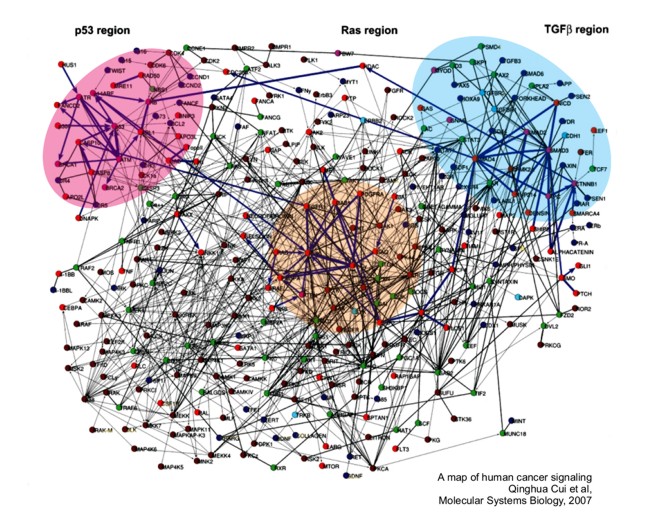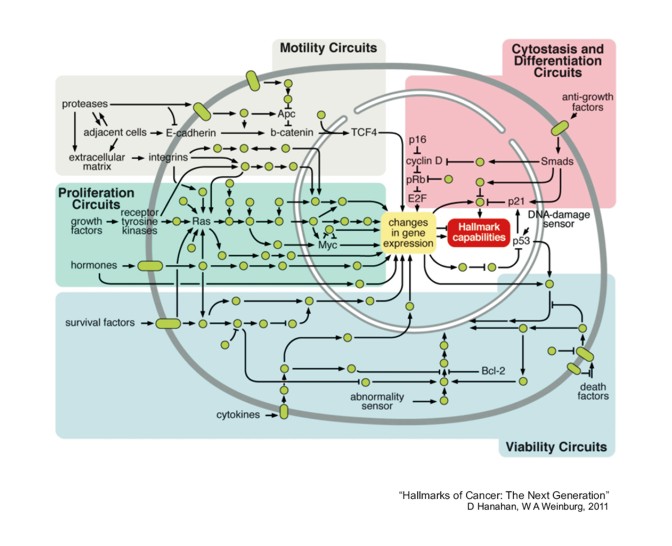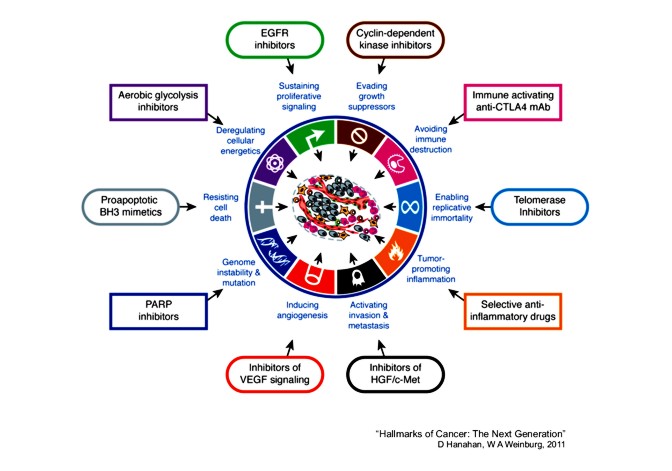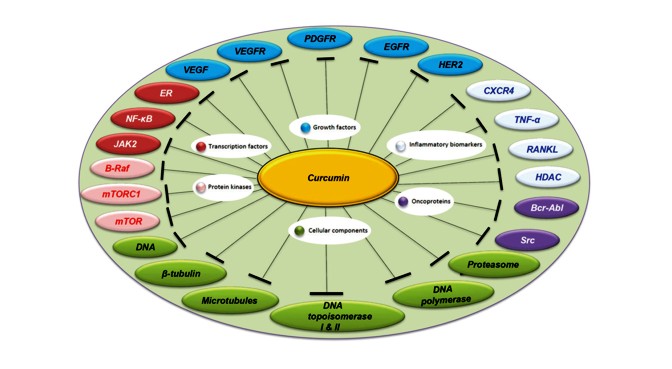
Cell signaling pathways
Matching signaling “chaos” to biological function

Cancer cellular microenvironment consists of dynamic, reactive, redundant cell signaling. This is an environment of continuous injury, damage and damage signaling from within cells, cell membrane, extracellular matrix and extracellular environment. It has been described as “chaos” for obvious reasons. In spite of the futility to control such an dynamic environment by drug inhibitors, chemotherapy is a routine treatment for recurrent cancers, failed “curative” treatments.

The authors provide and example of how cell signaling can be organized into “systems,” where signaling actually corresponds to specific function of the cell. Note that the cell signaling described is “upstream” of the resulting “Hallmarks” of cancer. Hallmarks of cancer are considered to be the common traits shared among the majority of cancers. We are pursuing cell signaling and functional systems that influence the signaling shown in this diagram.

The current approach in medicine is to develop drugs to target and obstruct specific signaling pathways. With the evolving understanding that these pathways represent cellular function, it becomes overwhelmingly apparent that any attempts to interrupt this complex environment can only fail. Drug inhibitors, the standard protocol of treatment for failed curative procedures (surgery and radiation), have been documented to actually encourage the cancer to become more aggressive, more deadly.

“Cancer-linked targets modulated by curcumin,” N Hasima, BB Aggarwal, 2012
Curcumin, one of the most researched natural agents is well known for its anti-cancer and healing properties. Curcumin has demonstrated effectiveness in the modulation a several of signaling pathways and cellular functions resulting in the elimination of cancer cells. As an alternative to futile attempts to obstruct the body’s attempts to heal itself, as in chemotherapy drugs, natural agents work in synergy with the body to stop injury at the cell level, to eliminate cancer cells by programmed cell death (apoptosis) without injuring healthy cells, without side effects.
